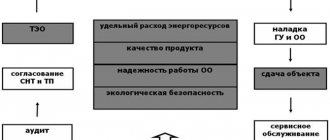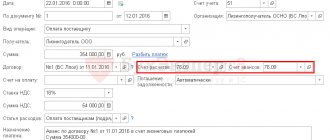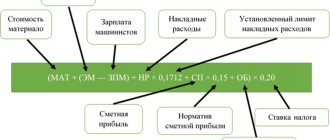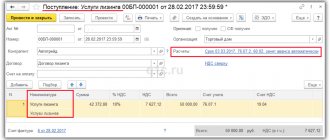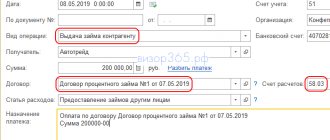Situation: an organization bought a building and rights to the land plot on which the property is located for 120 million rubles. However, the purchase and sale agreement does not separate the prices for the building and the plot. The cadastral value of the land is 30 million rubles. The cadastral value of the property is 50 million rubles.
How to determine the actual cost of land and building? What is the procedure for accounting for expenses incurred by an organization in accounting and tax accounting?
Let us note that the building and land plot are objects of real estate (Clause 1 of Article 130 of the Civil Code of the Russian Federation).
Land depreciation: general procedure
The most popular question among enterprises that have purchased a plot of land as their own is: do we need to take into account the wear and tear of the land? Tax legislation (Tax Code of the Russian Federation, clause 2, article 256) gives a clear and unambiguous answer to this question: in tax accounting, depreciation is not calculated on the cost of land, and depreciation on the site is not reflected. That is, the company that owns the land cannot reduce the basis for calculating income tax due to depreciation of the land.
The legislation substantiates its position as follows: land refers to environmental management objects (along with water and forest resources, subsoil, etc.), which, in turn, do not lose their properties over time. That is, in general, the consumer value of land is constant and unchanging. The position can be confirmed by the following example: a company that has purchased land for construction can use the site to locate a property for an unlimited amount of time (both after 20 and 50 years a building or other structure can be placed on the land).
Since the useful life of the land from a consumer point of view is not limited, there is no need to charge depreciation on the site. It turns out that in this case the land does not “wear out”, and its book value changes over time only due to improvements and revaluations.
As for accounting, in this case the provisions of PBU completely coincide with tax legislation. The position on non-accrual of depreciation on land in accounting is confirmed by PBU 6/01.
Accounting and tax accounting of land plots
With the Unified Agricultural Tax for tax purposes, only those expenses that are listed in paragraph 2 of Article 346.5 of the Tax Code of the Russian Federation can be taken into account. This also includes the costs of acquiring property rights to land plots, including the costs of acquiring the right to conclude a land lease agreement. Expenses for the acquisition of a land plot are recognized evenly over a period determined by the organization, but not less than seven years. Amounts of expenses are reflected on the last day of the reporting (tax) period (subclause 31, clause 2, clause 4.1, article 346.5 of the Tax Code of the Russian Federation). The same explanations are given in the letter of the Ministry of Finance of Russia dated July 16, 2008 No. 03-11-04/1/14.
Leased land: postings
If a company leases a site, then depreciation on it also does not need to be charged. The value of land received for temporary use should be reflected on the balance sheet. Depreciation must be charged only on fixed assets located on the leased site.
Example.
In April 2021, Focus JSC rented a plot of municipal property for the purpose of constructing a warehouse for its own use:
- book value of the plot – 1,050,704 rubles;
- the cost of the right to conclude an agreement with the municipality is 3,990,407 rubles. (paid in April 2017);
- The amount of state duty for registering a land lease agreement is 14,000 rubles. (paid in April 2017);
- start of construction of the warehouse - May 2021, commissioning of the facility - February 2021;
- useful life of the warehouse is 25 years;
- the period for writing off expenses for concluding an agreement with the municipality is 4 years;
- documents for state registration are dated 05/18/2017.
The following entries are reflected in the Focus accounting:
| date | Debit | Credit | Sum | Description |
| 05.04.17 | 08.3 | 76 | RUR 3,990,407 | The costs of drawing up a lease agreement for municipal land (the right to conclude an agreement) have been taken into account. |
| 05.04.17 | 76 | 51 | RUR 3,990,407 | Paid the cost of the right to conclude an agreement with the municipality |
| 05.04.17 | 08.3 | 68 State duties | 14,000 rub. | The costs of registering a land lease agreement are taken into account |
| 05.04.17 | 68 State duties | 51 | 14,000 rub. | The state fee for registering a land lease agreement has been paid |
| 05.04.17 | 001 | RUB 1,050,704 | The off-balance sheet reflects the cost of the municipal plot |
Until the premises are put into operation, the Focus accountant records monthly expenses for the right to enter into an agreement:
RUR 3,990,407 / 4 years / 12 months = 83.133 rub.
After putting the premises into operation, these expenses are reflected in tax accounting in order to reduce taxable profit.
Accounting and tax accounting of land acquisition transactions
Instructions for the application of the Chart of Accounts for the accounting of financial and economic activities of organizations, approved by Order of the Ministry of Finance of the Russian Federation dated October 31, 2000 No. 94n “On approval of the Chart of Accounts for the accounting of financial and economic activities of organizations and instructions for its application”, to summarize information about the costs of the organization for objects that will subsequently be accepted for accounting as fixed assets, account 08 “Investments in non-current assets” is assigned, subaccount 08-1 “Acquisition of land plots” until the organization registers ownership of the land plot in the Unified State registry
Land for a quarry or landfill
In certain cases, the company can still charge depreciation on the land and thus reduce taxable profit. According to the law, land depreciation is charged if it is established that the consumer properties of the site have changed over time. Here are the most common options for this situation:
- The land is used as a quarry for mining. If a site is acquired for the purpose of mining, its cost must be depreciated in the general manner. The quarries belong to the 7th OS group with a useful life of 15 to 20 years.
- The site is used to accommodate a waste dump. If land is acquired for use as a municipal waste dump, the site has a limited useful life and is therefore subject to depreciation as required.
In each of the listed cases, the useful life of the site is established by internal regulations (accounting policies). The amount of monthly deductions is determined based on the period of use. The accounting records the monthly posting Dt 02 Kt 01.
Is the land plot an object of fixed assets?
First of all, we will find out whether the land plot is an object of fixed assets for profit tax purposes. According to para. 1 clause 1 art. 257 of the Tax Code of the Russian Federation, fixed assets are understood as part of the property used as means of labor for the production and sale of goods (performance of work, provision of services) or for the management of an organization, with an initial cost of more than 40,000 rubles. Moreover, from the title of this article it follows that it establishes the procedure for determining the value of depreciable property . From this we can conclude that fixed assets are depreciable property. But does this apply to all fixed assets?
Is it possible to cushion asphalt pavement?
According to the position of the fiscal service, asphalt pavement refers to external improvement objects, which are recognized as non-depreciable property, and, therefore, there is no need to charge depreciation on such objects. The rationale for this position is as follows: asphalt pavement does not have the characteristics of a fixed asset - the object is not related to production activities and does not relate to a specific building and structure. Since the main purpose of the object is to create a convenient space on or near the territory of the organization, it cannot be recognized as an object of fixed assets and is not subject to depreciation. The position of the fiscal service is confirmed by letters of explanation (No. 03-03-06/1/63 dated 01/30/08, No. 03-03-04/1/487 dated 05/30/06).
At the same time, in judicial practice there are cases where the fact of charging depreciation on the cost of asphalt pavement is recognized as legitimate. Court decisions give grounds to consider it possible to charge wear and tear on asphalt pavement in the following cases:
- The construction of a road is inextricably linked with the creation of a fixed asset. The most common situation is that the contractor, as part of the contract for the construction of a building, has undertaken obligations to develop the adjacent territory (in this case, paving the road). Another example is that asphalt pavement is an integral part of the overall design of a construction site.
- The asphalt pavement was created without attracting targeted funding; its creation complies with legal requirements. For example, according to technical safety requirements, an asphalt site is required on the production site of an enterprise. In this case, the asphalt pavement is recognized as an asset and is depreciated in the general manner.
It should be noted that the arguments in favor of charging depreciation for asphalt sites are quite ambiguous and are based solely on judicial practice. Therefore, be prepared for the fact that you will also have to defend this position in court.
Consultations
Consultations
- Accounting Consulting
- Asset accounting
- Cash
- Depreciation
- Decommissioning of OS
- Short-term financial investments
- Accounts receivable
- Reserves
- fuels and lubricants
- Long-term assets held for sale
- Other current assets
- Real Estate Investments
- Fixed assets
- Buildings, structures
- Earth
- Vehicles
- Biological assets
- Intangible assets
- Deferred tax assets
- Other long-term assets
- Accounting policy
- Accounting for liabilities
- Short-term financial liabilities
- Tax liabilities
- Obligations for other mandatory and voluntary payments
- Short-term accounts payable
- Short-term estimated liabilities
- Other current liabilities
- Long-term financial liabilities
- Long-term accounts payable
- Accounting for capital and reserves
- Authorized capital
- Reserves
- Retained earnings (uncovered loss)
- Total profit (total loss)
- Income accounting
- Income from sales of products and provision of services
- Income from financing
- Other income
- Expense accounting
- Cost of products sold and services provided
- Expenses for sales of products and provision of services
- Administrative expenses
- other expenses
- Accounting for currency transactions
- Accounting for exchange rate differences
- Accounting for deferred taxes
- Application of financial reporting standards
- Questions about 1C
- Questions about IS SONO
- Tax questions
- Corporate income tax (CIT)
- Taxable income
- Advance payments under CIT
- Total annual income
- Non-taxable amount of total annual income
- Adjustment to total annual income
- CIT deductions
- Deductions for fixed assets
- Investment tax preferences
- Adjustment of income and deductions
- Losses
- The procedure for calculating and terms of payment of CIT
- CIT withheld at source of payment
- Tax rates, tax period and tax return (form 100.00, 130.00, 150.00)
- Reduction of taxable income and exemption from CIT for certain categories of taxpayers
- Taxation of organizations in SEZs
- Individual income tax (IIT)
- IIT payers
- Taxation of income of a foreigner who is a resident of the Republic of Kazakhstan
- Taxation of income of non-resident individuals
- Objects of taxation
- Income not subject to taxation
- Tax rates, tax period, payment deadlines
- Income taxed at source of payment
- Application of tax deductions
- Income not taxed at source of payment
- Personal income tax declaration (TNF 200.00, 201.00, 210.00, 220.00, 240.00)
- Features of international taxation
- Taxation of income of non-resident legal entities operating without establishing a permanent establishment in the Republic of Kazakhstan
- Taxation of income of non-resident legal entities operating in the Republic of Kazakhstan through a permanent establishment
- Taxation of income of non-resident individuals
- Application of international treaties
- Taxation of income of residents from foreign economic activity (FEA)
- Value added tax (VAT)
- VAT payers and objects
- Taxable turnover VAT
- Taxable import VAT
- Turnover and imports exempt from VAT
- VAT credit
- Invoice
- Procedure for calculating and paying VAT, TNF 300.00
- Relationships with the budget regarding VAT
- VAT in the Customs Union (CU)
- VAT for non-residents
- Excise taxes
- Royalty
- Taxation of subsoil users
- Bonuses
- Payment for reimbursement of historical costs
- Mineral extraction tax
- Social tax (social tax)
- Social tax payers
- Calculation, payment and presentation of tax reporting for social tax by payers using SNR
- Object of taxation and social tax rates
- The procedure for calculating and paying social tax
- Tax period and social tax return
- Vehicle tax
- Land tax
- Property tax
- Gambling tax
- Flat tax
- Individual entrepreneur in the generally established mode (URM)
- Special tax regimes (STR)
- SNR based on patent
- SNR based on a simplified declaration
- SNR for peasants or farms
- SNR for legal entities - agricultural producers. products, aquaculture products (fish farming) and rural consumption. cooperatives
- Non-tax payments
- Mandatory pension contributions (CPC)
- Mandatory social contributions (social contributions)
- Questions about the customs union
- Labor issues
- Changes to the Tax Code
- Consultations with tax authorities
- Tax administration
- Tax audits
- Procedure for using KKM
- Registration of taxpayers with tax authorities
- Accounting for the fulfillment of tax obligations, obligations for the transfer of social tax benefits, and the payment of social contributions
- Financial assistance, loans
- financial leasing
- Ministry of Labor
- Letters from the Tax Code of the Ministry of Finance of the Republic of Kazakhstan
- Statistical reporting
- November 30 Do obligations arise to pay CIT and submit TNF 101.04 when purchasing an air ticket from a foreign airline?
An employee of a LLP (EUR, VAT payer, resident of the Republic of Kazakhstan) purchased a ticket on the Chocotravel website from a non-resident carrier UZBEKISTAN AIRWAIS in the amount of 61,919 tenge (payment by card) for a business trip to Tashkent on September 27, 2021. Fuss… - November 30 Does an individual entrepreneur have tax obligations in connection with the purchase of a forklift?
An individual registered as an individual entrepreneur (SNR on UD) in 2018 plans to purchase a forklift. What obligations may an individual entrepreneur have in this regard? - November 30 Is a LLP subject to registration as a taxpayer engaged in electronic trading of coupons (QR codes)?
The LLP operates by selling coupons (QR codes) with promotions and discounts to individuals and legal entities using information technology through the Internet platform. Registration of transactions for the sale of coupons (QR codes) is carried out… - November 30 When writing off an old car, do you have an obligation to pay a recycling fee?
The joint-stock company decided to write off the old car due to its unusability and sell it for scrap. You must pay a disposal fee. Are there any fees or duties in the Republic of Kazakhstan for deregistration and disposal of cars, in what regulations? - November 30 Does the CGP for PVC have the right to include the contractual penalty in its income?
KGP at PVC entered into an agreement for the supply of goods under government procurement, the supplier did not deliver the goods on time, and therefore a penalty was withheld according to the agreement. The KGP for RVC must transfer these funds to budget revenue or have the right to leave it in the revenue... - November 30 Does the servicing bank have the right to demand from the LLP a report on the use of cash?
Does the bank have the right to demand from the LLP, which has a current account with this bank, reports on the cash that the LLP withdrew from its account with this bank? - November 29 Can a LLP, a VAT payer, sell goods to a second LLP, a VAT payer, at cost, without paying VAT and CIT?
Can a LLP, a VAT payer, sell goods to a second LLP, a VAT payer, at cost, without paying VAT and CIT? - November 29 How to bring fixed assets into compliance with the state classifier of fixed assets?
A letter came from the State Revenue Office about the need to bring fixed assets into compliance with the state classifier of fixed assets, namely, to revaluate fixed assets. How often is it necessary to revaluate fixed assets and revaluate... - November 29 How to determine turnover for VAT deduction (construction in progress, fixed assets)?
We are building our own base and office, and taking VAT as a credit on invoices. This year we will complete construction and buy this site, put it into operation, there are fixed assets on which depreciation is charged, at the end of the year we want to withdraw from VAT. For turnover… - November 29 Is it possible to add notes to cash receipt orders (RKO) with a pen?
According to the rules for conducting cash transactions, when issuing funds, the basis must be indicated. We have printed RKOs without indicating the reasons. Is it possible to add the basis for issuing funds with a pen? Wouldn't this be considered a...
